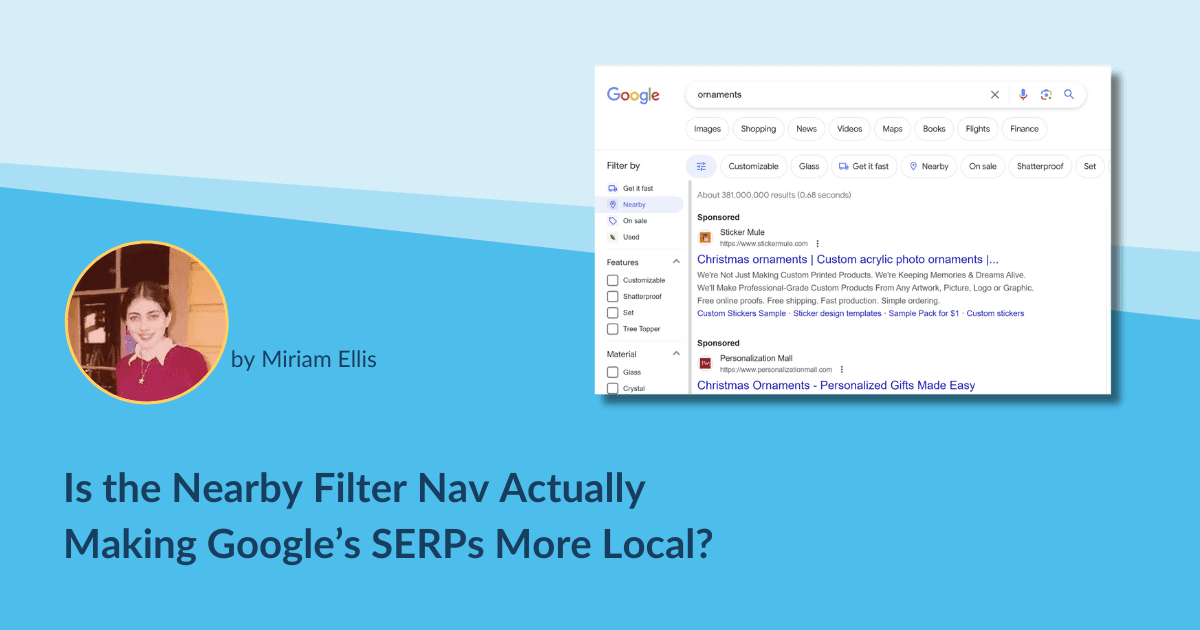You’ll note in the above that Google is disclosing that there is a store nearby (1.3 miles away from what I’m guessing is the city centroid), and could this be that this is their attempt to localize the product blocks? Even if the store nearest me doesn’t actually stock these items?
Because the SERPs don’t represent the diversity of actual local options, could Google be filling this SERP feature with the one big brand store whose inventory they have substantial access to, knowing there is actually a nearby location of this brand, even if it doesn’t stock the items being featured? Including mileage in the blocks in the particular example makes me suspect that this might be the most evident effect of the “nearby” filter… not on organic SERPs, but on in-SERP product blocks. If so, it’s not working very well, given the distance between me and the Wondershop Champagne Tinsel Ball at a Target location an hour and a half away.
I would be such a fan of the “nearby” filter giving new prominence to diverse local brands, particularly SMBs. What worries me about this current SERP is how it reinforces big biz bias, making it seem like the main places to shop are non-independently-owned stores that require quite a bit of fuel to get to, when I know, for a fact, that people within my example city can buy tons of Christmas ornaments from little hardware stores, pretty nurseries, local booksellers, sole proprietor furniture shops, interesting antique shops, and a variety of home decor and craft boutiques. Google’s SERPs make it look like the big box is the only game in town (or 65 miles away), and that concerns me because it has the flavor of a self-fulfilling prophecy. If what’s in the SERPs influences where people shop locally, small businesses are in trouble with this type of representation (or lack thereof).
It has to be said that the fault of this isn’t entirely on Google’s shoulders. That popup for the Champagne Wondershop Tinsel Ball is pulling all of its information from Target’s extensive product landing page for that item. Google can’t show results for inventory it doesn’t know about, and small local businesses often lack the time or budget to fully use all of Google’s features or build out websites as sophisticated as those of multi-national enterprises. When I look at the websites and listings of the small brands I know sell holiday decor in this town, I see a general lack of sufficient SEO and marketing, contributing to their invisibility on the web.
At the same time, Google has never fully succeeded at outreach to the SMBs that make up the majority of its local business index, so support and partnership opportunities have continuously been left on the table. It’s little wonder that SEOs, in general, cite Google’s apparent bias towards featuring big brands in their SERPs, and this appears true even with the wider roll-out of this “nearby” filter menu. Bigness seems to win out over diversity, even when talking local. Still, there are two sides to the story of why that is: nearly 20 years have gone by since the introduction of Google Maps, but Google’s index still doesn’t fully represent real, local commercial landscapes because SMBs in many categories have yet to embrace all the work/benefits of maximum visibility fully. There just hasn’t been a full connection on either side yet.
